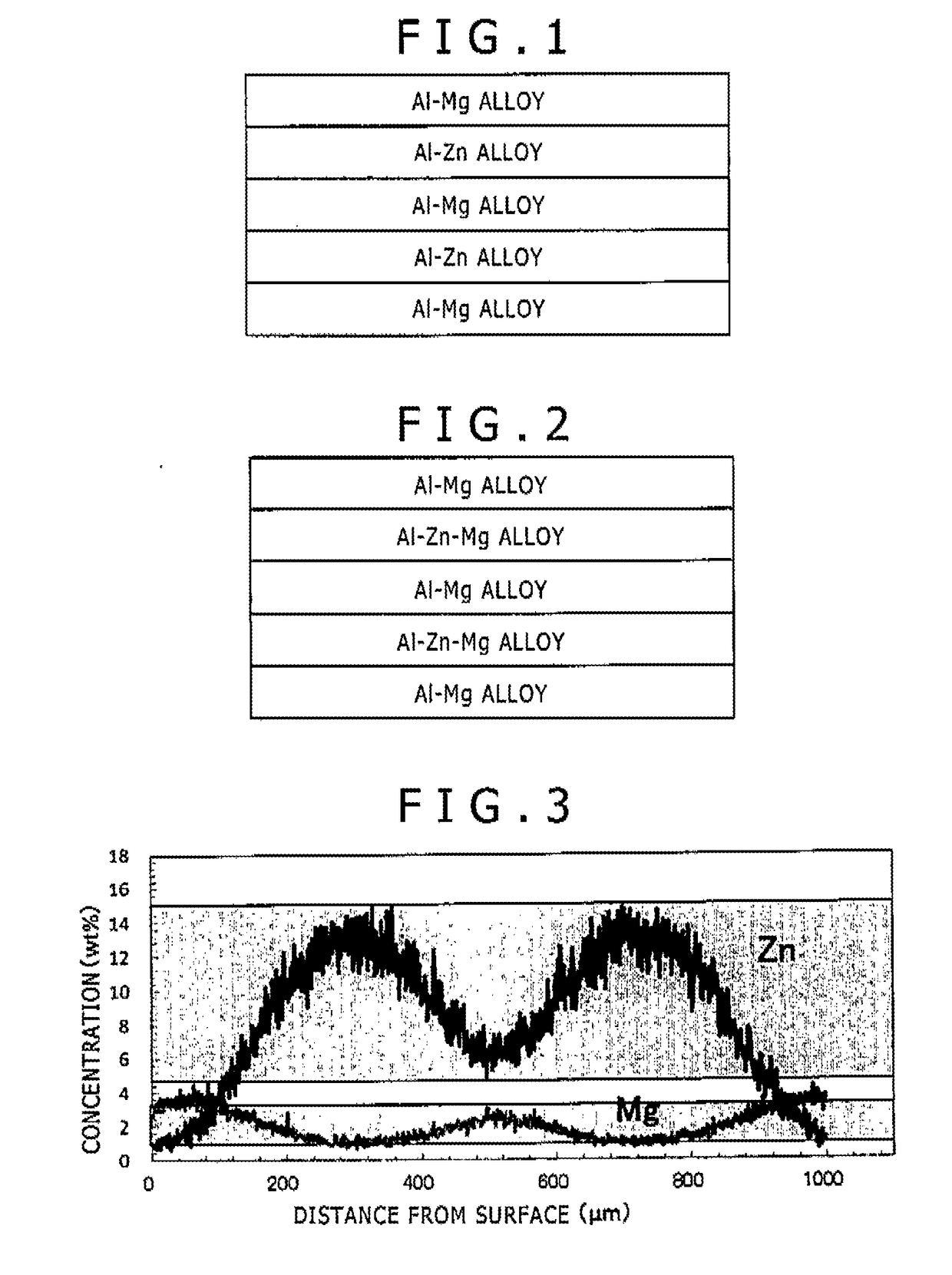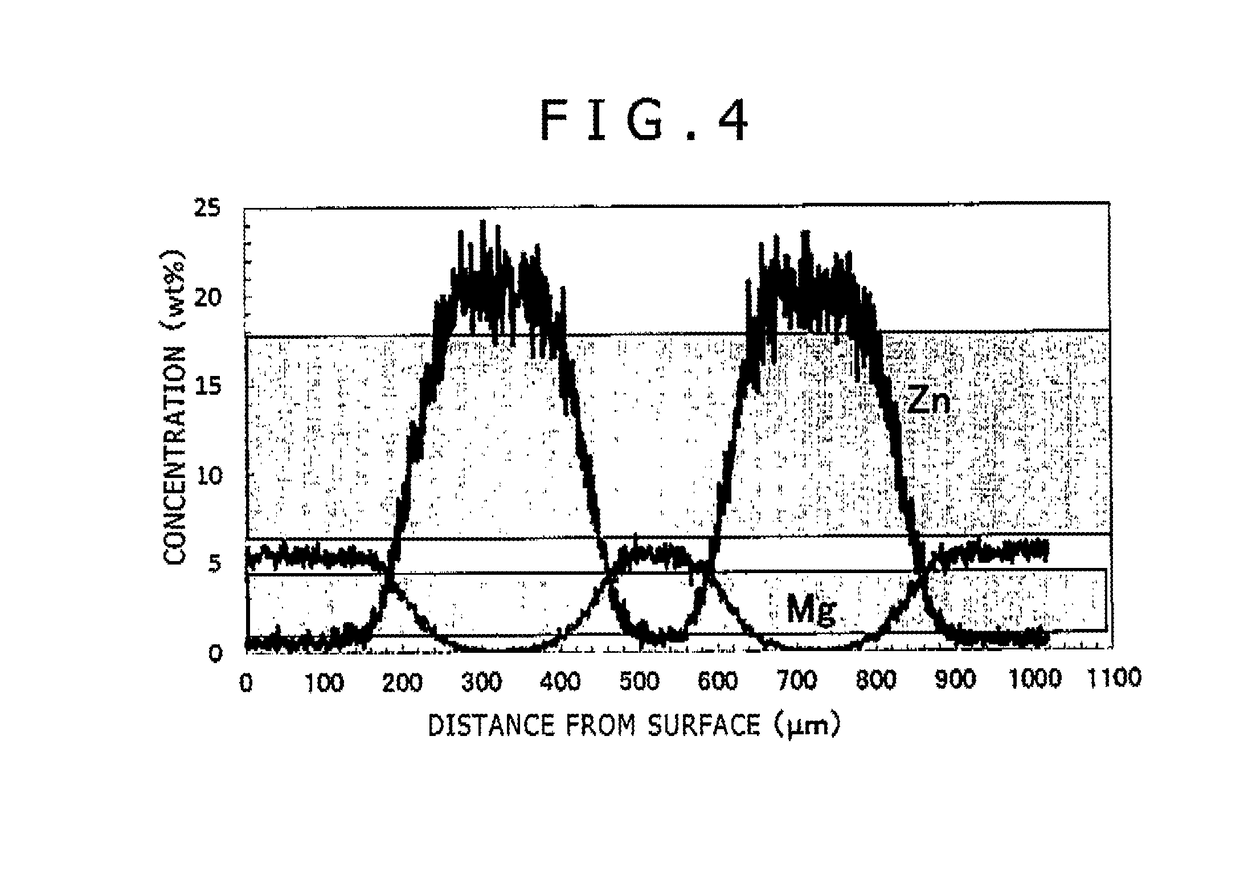Aluminum-alloy-clad plate and aluminum-alloy-clad structural member
a technology of aluminum alloy and clad plate, which is applied in the field of aluminum alloy clad plate and aluminum alloy clad structural member, can solve the problems of reducing ductility, reducing high alloying for high strength tend to contradict formability into the structural member, so as to achieve good formability, increase the ductility of the material clad plate, and high strength
- Summary
- Abstract
- Description
- Claims
- Application Information
AI Technical Summary
Benefits of technology
Problems solved by technology
Method used
Image
Examples
example
[0107]The present invention is now described in detail with Example.
[0108]A plurality of aluminum alloy layers were laminated and subjected to diffusion heat treatment, so that aluminum alloy clad plates having different Mg—Zn interdiffusion regions between the laminated aluminum alloy layers were manufactured, and formability and strength thereof were compared to one another. Table 2 shows the results.
[0109]The aluminum alloy clad plates were specifically manufactured as follows.
[0110]Aluminum alloy slabs A to K having alloy compositions shown in Table 1 were melted and casted. The casted slabs were separately subjected to homogenization, hot rolling, and cold rolling as necessary in the usual manner to produce plate materials that had the above-described compositions and were adjusted to have the same thickness of 1 mm such that all clad ratios were equal in correspondence to the number of laminated layers.
[0111]Such plate materials were laminated together in various combinations ...
PUM
| Property | Measurement | Unit |
|---|---|---|
| total thickness | aaaaa | aaaaa |
| grain sizes | aaaaa | aaaaa |
| mass % | aaaaa | aaaaa |
Abstract
Description
Claims
Application Information
 Login to View More
Login to View More - R&D
- Intellectual Property
- Life Sciences
- Materials
- Tech Scout
- Unparalleled Data Quality
- Higher Quality Content
- 60% Fewer Hallucinations
Browse by: Latest US Patents, China's latest patents, Technical Efficacy Thesaurus, Application Domain, Technology Topic, Popular Technical Reports.
© 2025 PatSnap. All rights reserved.Legal|Privacy policy|Modern Slavery Act Transparency Statement|Sitemap|About US| Contact US: help@patsnap.com



